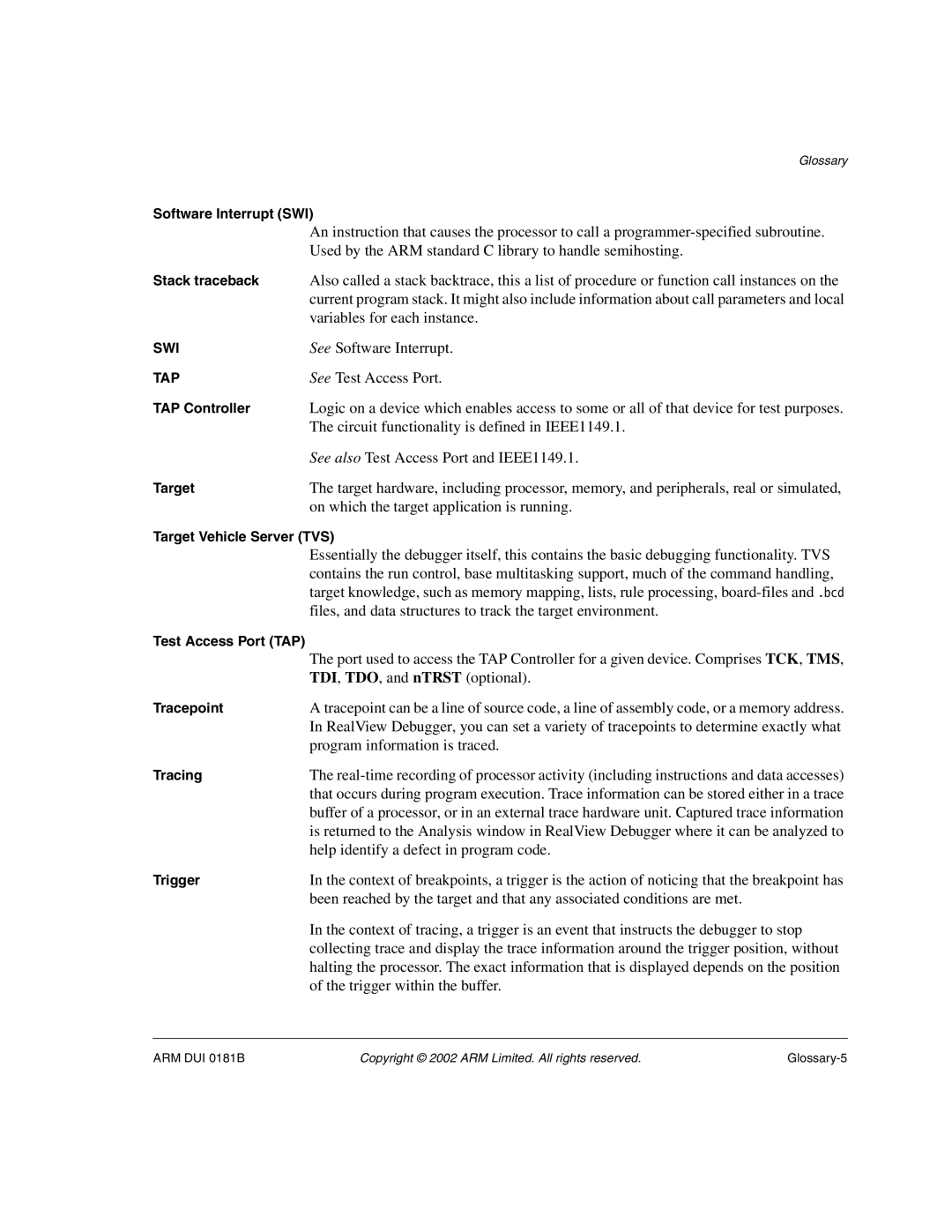| Glossary |
Software Interrupt (SWI) | |
| An instruction that causes the processor to call a |
| Used by the ARM standard C library to handle semihosting. |
Stack traceback | Also called a stack backtrace, this a list of procedure or function call instances on the |
| current program stack. It might also include information about call parameters and local |
| variables for each instance. |
SWI | See Software Interrupt. |
TAP | See Test Access Port. |
TAP Controller | Logic on a device which enables access to some or all of that device for test purposes. |
| The circuit functionality is defined in IEEE1149.1. |
| See also Test Access Port and IEEE1149.1. |
Target | The target hardware, including processor, memory, and peripherals, real or simulated, |
| on which the target application is running. |
Target Vehicle Server (TVS)
Essentially the debugger itself, this contains the basic debugging functionality. TVS contains the run control, base multitasking support, much of the command handling, target knowledge, such as memory mapping, lists, rule processing,
Test Access Port (TAP)
The port used to access the TAP Controller for a given device. Comprises TCK, TMS, TDI, TDO, and nTRST (optional).
Tracepoint | A tracepoint can be a line of source code, a line of assembly code, or a memory address. |
| In RealView Debugger, you can set a variety of tracepoints to determine exactly what |
| program information is traced. |
Tracing | The |
| that occurs during program execution. Trace information can be stored either in a trace |
| buffer of a processor, or in an external trace hardware unit. Captured trace information |
| is returned to the Analysis window in RealView Debugger where it can be analyzed to |
| help identify a defect in program code. |
Trigger | In the context of breakpoints, a trigger is the action of noticing that the breakpoint has |
| been reached by the target and that any associated conditions are met. |
| In the context of tracing, a trigger is an event that instructs the debugger to stop |
| collecting trace and display the trace information around the trigger position, without |
| halting the processor. The exact information that is displayed depends on the position |
| of the trigger within the buffer. |
ARM DUI 0181B | Copyright © 2002 ARM Limited. All rights reserved. |
